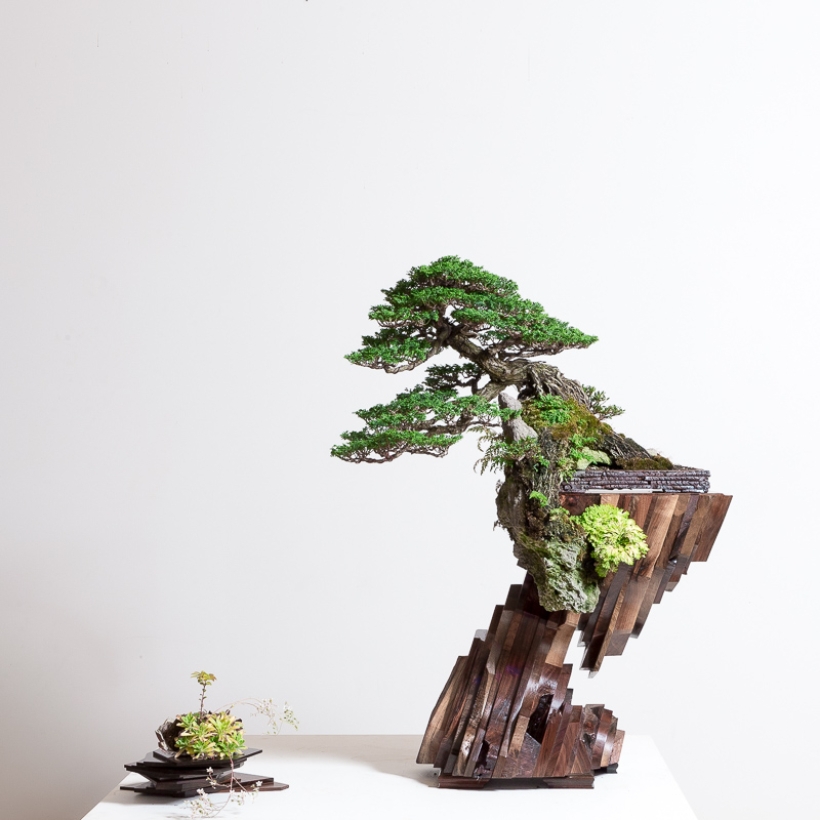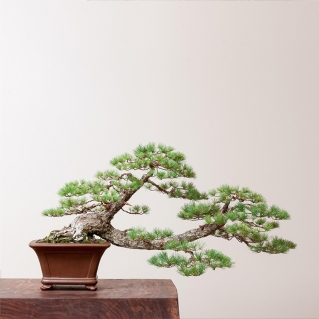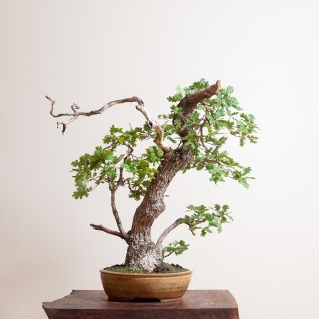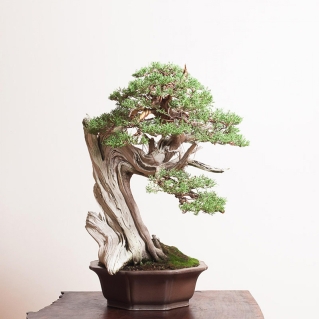Hinoki Cypress Bonsai
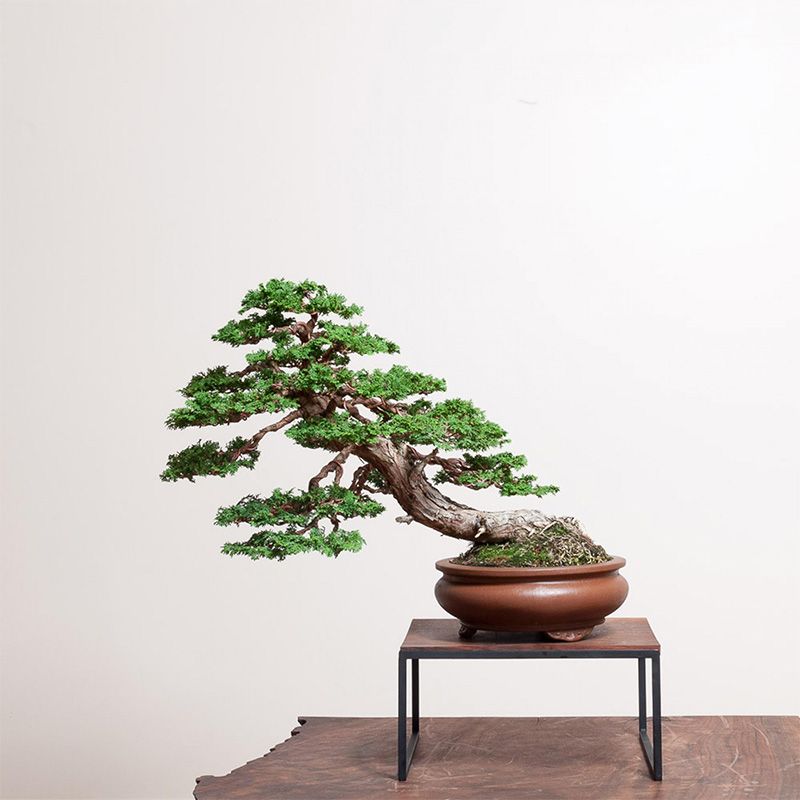
General Information
Hinoki cypress — Chamaecyparis obtusa — is a luxurious, emerald green tree with compact, soft needles. It is often used in much of the beautiful architecture and woodwork of traditional Japanese structures.
Hinoki cypress is a coastal, low-elevation, elongating species. It prefers a lush, high-moisture, and high-rainfall area where it can grow to impressive heights.
In bonsai, the hinoki cypress is capable of representing a multitude of forms and shapes. It has phenomenal bark, a soft presentation, and promises to give you more enjoyment than hassles.
Caring for Hinoki Cypress Bonsai
Watering
Hinoki cypress prefers to be kept moist, but not wet. Do not let hinoki cypress completely dry out between waterings.
Water your hinoki cypress when you see that the surface of the soil is dry but the particles immediately beneath the soil still have moisture in them.
Sun Exposure
Hinoki cypress would be rated as a partial sun species. However, it can tolerate full sun in the northernmost climates where the sun is less intense.
As a bonsai subject, hinoki cypress is going to have very tight inner nodes and in the full sun, it runs the risk of burning and discoloring and may even die over a prolonged period of time due to that damage.
Hinoki cypress is particularly prone to burning after the pruning process, so providing it with some relief from intense sunlight—especially during the spring season—will be beneficial.
Ideally, your hinoki cypress will be placed in a part of your garden that offers full sun in the morning and some shade coverage in the afternoons.
Temperature
Because the hinoki cypress has the ability to move a lot of water, it can tolerate fairly intense heat. However, the hotter the temperature, the more shade the hinoki cypress will need.
At temperatures of 95°F or above, the hinoki cypress will require 50% shade, meaning full sun in the morning and full shade in the afternoon.
Hinoki cypress can tolerate cold temperatures down to 20-25°F as long as it’s a bigger tree with a larger soil volume. However, if your hinoki cypress is smaller or lives in a shallow tray, you might see some tips die or some portions of the tree struggle and suffer in these colder temperatures.
Fertilizing
Hinoki cypress is a light to moderate fertilizer consumer at best. It’s a slow, delicate growing tree, so you want to respect that by not trying to make it do something that goes against its natural tendencies.
The hinoki cypress prefers light applications of fertilizer when it’s in its refinement stages, and moderate applications when it’s in its development stages.
In the spring you should fertilize moderately as growth emerges up until you start to see the tree shutting down for summer dormancy. During the hottest part of summer, typically mid-July through August, you do not need to fertilize. You can then resume moderate fertilizing through the fall to help the tree amass its vascular tissue and continue to perpetuate its strength.
Pruning
Hinoki cypress bonsai pruning is for structural and design purposes and should be done in the spring, prior to the onset of growth, or in the early fall, prior to the onset of vascular productivity.
However, when it comes to refinement, you can prune once in the late spring or early summer just to keep the tips refined and slow the rate of growth. This will help hold the shape of the tree.
If you do refinement pruning in late spring or early summer, be sure to offer hinoki cypress a shady spot to recover so that you don’t expose that interior foliage to intense sunlight and run the risk of damaging the tree.
Wiring
Your hinoki cypress can be wired in the early spring, prior to the onset of growth. This is when you can do the most reduction of foliage and the most significant bending with the faith that any damage will be patched.
If you do plan to wire during the spring or summer months, it’s best to stick to refinement wiring, using small wires, and making only small moves. If you attempt to do structural and styling wiring in the hotter months you run the risk of damaging branches and increasing the potential for branch dieback.
Repotting
Repotting your hinoki cypress is best done in the mid to late spring, prior to the onset of growth. Right as those tips are starting to show signs of growth, you should repot using one part pumice, one part lava, and three parts akadama soil mix.
Akadama is both highly moisture retentive and nutrient retentive, while the pumice and lava allow the hinoki to exist inside of a bonsai container for a prolonged period of time, as the roots grow more slowly with this tree.
During the repotting process, you can reduce a significant amount of root mass, but you should never bare-root it. Always leave a portion of the native root system untouched.
When you reduce the roots you should never prune the foliage, but when the roots are reestablished, you can heavily reduce the foliage at the right times of the year.
Propagation
Hinoki cypress is a challenging species to air layer, but it can be done. Propagation is best done by striking smaller cuttings from softwood or semi-hardwood.
Typically, the large hinoki cypress trees come from the nursery industry where the trees have been allowed to grow freely.
Pests/Disease
Hinoki cypress is relatively pest and disease-free when it’s in a healthy state. There’s always potential for woodboring beetles to enter the living tissue of a weakened hinoki and lay their larva which can consume the cambium of the tree.
But generally, the hinoki is a very durable, strong, and pest-free tree that is free from the issues other conifers have, such as aphids or spider mites.
Hinoki Cypress Bonsai FAQS
Ideally, you won’t select a hinoki cypress whose design you want to be compact unless it already has interior branching and interior buds.
Hinoki cypress is best utilized as an elegant, elongated upright or slender design species. To try and compact hinoki cypress and then expect it to back bud is working against the natural habitat of the tree, as they do not back bud on old wood very readily.
The most important thing is to build up the health of the tree, focusing on the tips, and prune it at the right time of year. This should help your hinoki back bud quite well. If you cut off all of the growth from the tips and wire it down when the tree is weak, it will not respond favorably.
Allow the tree to develop strength in the tips, style it correctly, and give it time to methodically accumulate interior branching.
Yes, the hinoki cypress can tolerate temperatures over 100°F, but it demands a much more intense and heavy shade cloth to prevent it from burning.
Hinoki cypress like to stay moist, but not wet. Never let hinoki cypress completely dry out between waterings or it will suffer.
Hinoki cypress is not a major fertilizer consumer. At most, you’ll fertilize moderately to give the hinoki a good start.
Hinoki cypress bonsai styling can be a formal upright and an informal upright. They can occur in forests and clumps, but typically do not occur as a cascading or semi-cascading form of bonsai.
Do not expect your hinoki cypress to have a lot of deadwood or show a tortured environment as they come from a lush, high-moisture environment where deadwood would rot.
